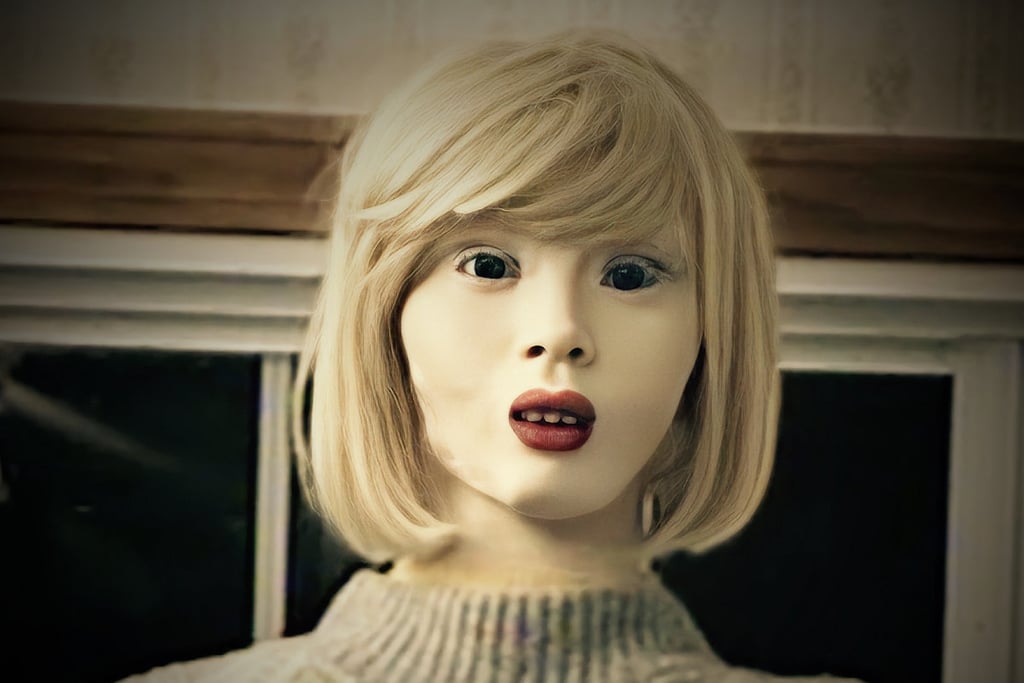The Unsettling Allure of 'I Feel Fantastic': A Dive into Tara's Enigma
When “I Feel Fantastic” first surfaced online, it seemed like an eerie relic of early YouTube—a stiff android named Tara singing in a soulless voice. But as theories grew, a darker narrative emerged. Some claim Tara’s creator, Jon Bergeron, murdered a young woman and programmed Tara to mimic her final screams. With whispers of torture, ritualistic undertones, and hidden footage showing bloodstained clothing and dismembered limbs, Tara became more than a robot—she became a grotesque monument to suffering. This is no simple viral video. It’s a chilling glimpse into depravity lurking behind synthetic smiles.
DISTURBING CASESGRIM REALITYCONSPIRACY THEORIESSINS OF THE FLESHABYASSCOLD CASEMYSTERYOUR DREADFUL WORLD
7/24/20255 min read
Introduction to Tara's Performance
When the robotic figure, known as Tara, first graced YouTube with her song "I Feel Fantastic" in 2009, it appeared to be an unassuming spectacle. An android dressed in a somewhat mundane aesthetic was singing an upbeat, mechanical tune in a typical suburban backyard. However, there was something deeply unsettling about her performance that soon transformed it into a source of intrigue and dread.
I Feel Fantastic: The Android That Sang Over a Woman’s Screams
When I Feel Fantastic surfaced on YouTube in 2009, it didn’t seem like much at first—a crude android named Tara crooning an upbeat mechanical tune in a bland suburban backyard. Her stiff arms jerked awkwardly as her glassy eyes stared into the camera, unblinking.
But as millions watched Tara’s unsettling performance, a creeping unease began to bloom.
Because something about her song felt wrong.
Too cheerful.
Too artificial.
And too much like a mask covering something monstrous.
It wasn’t long before conspiracy theories erupted like a virus. Was Tara merely a novelty entertainment bot? Or was she programmed to sing for someone—or worse… about someone?
As it turns out, the truth might be far more grotesque than anyone imagined.
The Jon Bergeron Nightmare
Jon Bergeron was no ordinary robotics enthusiast. On the surface, he seemed like an eccentric hobbyist—a solitary man obsessed with designing lifelike androids. Tara, his most famous creation, was marketed as a prototype for theme parks, home security, and even musical performances.
But in the shadowed alleys of the dark web, Bergeron’s name was whispered with revulsion.
In the spring of 2003, 23-year-old Eliza Thornton, a college student in suburban Maryland, disappeared while walking home from her shift at a diner. Witnesses later reported hearing muffled screams near Bergeron’s property.
For days, police combed the area with dogs and infrared cameras. They found nothing.
But months later, a leaked police report —never officially released to the public—painted a picture so vile it seemed almost impossible to believe:
Eliza had been kidnapped and held captive in Bergeron’s soundproof basement.
The report described in graphic detail what investigators discovered:
Eliza’s fingernails had been ripped out with pliers.
Her skin was covered in burns, cuts, and human bite marks.
She had been sexually assaulted with various metal tools and left chained for days in her own filth.
Before her death, her lips were slashed from ear to ear, forcing her face into a permanent grotesque “smile.”
When her remains were finally recovered from a shallow grave behind Bergeron’s workshop, neighbors reported seeing Bergeron carrying large trash bags to his backyard.
The worst part?
A VHS tape, labeled “Tara Test Footage,” was found in the house.The Unease that Grew
While millions were initially drawn to Tara's catchy melody, they soon found themselves overwhelmed by an atmosphere of discomfort. Her erratic movements and expressionless gaze contributed to a sense of dissonance; beneath the surface of her cheerful song lay a sense of impending unease. Viewers began questioning the motivations behind her performance. Why did the tune sound so cheerful? Was there a deeper, perhaps more sinister, significance hidden beneath the mechanical facade?
Conspiracy Theories and Cultural Impact
The unsettling nature of Tara's performance did not go unnoticed. As she garnered millions of views, a phalanx of conspiracy theories began to emerge. Some viewers speculated whether Tara was merely a novelty entertainment bot, while others posited a more profound implication: Could she be programmed to convey emotions for someone—perhaps a person who was screaming in the background, unnoticed by many?
These theories ignited discussions surrounding artificial intelligence and the capacity for machines to evoke human-like sentiments. As skepticism surged, Tara became a symbol of our fears surrounding technology and its manipulation of emotions. The excitement generated by these inquiries was clear, compelling a wide array of viewers to analyze the peculiarities of Tara's presentation closely.
The unsettling combination of cheerfulness blended with an underlying air of something wrong beckoned many to delve deeper into the implications of a robotic talent performing in such a way. Was Tara simply a conduit for joy, or was she masking a dark truth? The beauty of this android's performance lay in its ambiguity, showcasing the uncomfortable intersections between naiveté and horror.
Tara’s Song: A Taunt from the Dead
The lyrics to I Feel Fantastic take on a nauseating new meaning when tied to Eliza’s murder.
“I feel fantastic… hey hey hey…”
Was Tara singing as Eliza? Was the android’s voice mocking her suffering, programmed by Bergeron to replay the horrors again and again?
In one recovered clip, Tara jerks her head mechanically as her synthetic voice glitches, repeating:
“Run. Run. Run.”
Her voice distorts, sounding almost human, almost pleading, as the camera lingers on her blank, silicone face. The shot then cuts abruptly to Bergeron’s backyard—the same patch of earth where Eliza’s body was buried in pieces.
A Reddit user claimed to have purchased Bergeron’s original DVD compilation:
“One video showed Tara wearing a dress stained dark red. As she sang, you could faintly hear screaming under the music. It wasn’t a glitch. It was like she was mimicking the last sounds Eliza made before she died.”
Another claimed to spot a pale, limp human arm visible for a split second in one of the videos—edited out in later uploads.
The VHS From Hell
In online forums like /x/ on 4chan, the Tara tapes became an infamous obsession.
One poster described a clip they claimed to have recovered from Bergeron’s basement:
“Tara was sitting on a chair, twitching violently. Blood pooled at her feet. Her song looped endlessly, but between verses, you could hear faint sobbing… and then, screaming. Not digital noise—real screaming.”
Others described a still image where Bergeron appears behind Tara, grinning at the camera as her stiff arm points toward a plastic tarp on the floor. Under the tarp, something vaguely human-shaped.
A Ritual in Silicon
Some believe I Feel Fantastic wasn’t just a hobby project—it was part of a ritual.
In one banned clip, Tara reportedly chants garbled phrases backwards. When played in reverse, the words are said to reveal chilling messages:
“Offer her blood.”
“Forgive the pain.”
“I feel fantastic.”
Tara’s head jerked violently as her mechanical fingers twitched like claws.
Forum users speculated:
“Bergeron didn’t just kill Eliza. He uploaded her pain into Tara. He turned her into a puppet to relive his fantasy.”
“Tara isn’t a robot. She’s a coffin.”
These are the kinds of stories you only hear whispered in the internet’s deepest shadows.In conclusion, "I Feel Fantastic" exemplifies how a seemingly benign piece can spiral into a cultural phenomenon that questions our perception of AI and our innate understanding of emotion. Tara's unsettling allure captivates audiences not merely because of her song, but rather due to the complexities woven into her enigmatic existence. The fusion of technology, art, and ethical inquiry reflects a broader societal unease as we continue to navigate the rising prominence of artificial intelligences in our lives.
Final Thoughts: A Song for the Dead
I Feel Fantastic is no longer just a creepy viral video. It has become a digital tombstone for Eliza Thornton—a victim whose screams were drowned out by an android’s synthetic voice.
Whether the legends are true or not, one thing is undeniable: Bergeron’s creation is tainted. Tara’s vacant smile, her stiff limbs, her hollow cheerfulness—all of it reeks of a deep, festering evil.
Somewhere in the silence between Tara’s phrases, you can almost hear the faint echoes of pain.
“I feel fantastic… hey hey hey…”
But she didn’t.
And neither do we.
A Pop Culture Cameo: Smiling Friends
Years after the original video gained notoriety, Tara made a brief, haunting cameo in Adult Swim’s Smiling Friends. For a split second in the background of Episode 8, Season 2 Tara’s uncanny face flickers onscreen as part of a surreal montage.
Was it just a nod to early internet horror? Or a subtle reminder that Tara’s legacy still lives on—grinning through your screen, waiting for you to notice?
The cameo reignited interest in the I Feel Fantastic lore, pulling Tara out of the dusty archives and into a whole new generation’s nightmares.
🔗 Sources & Archives
I Feel Fantastic – YouTube
Archived Jon Bergeron Posts (Wayback Machine)
Close to the end of the video some allegedly say it's where she was buried


Despair
A dark exploration of societal decay and despair.
Void
+1234567890
© 2025. All rights reserved.
Any comments, business inquiries, ideas, or stories, let us know
